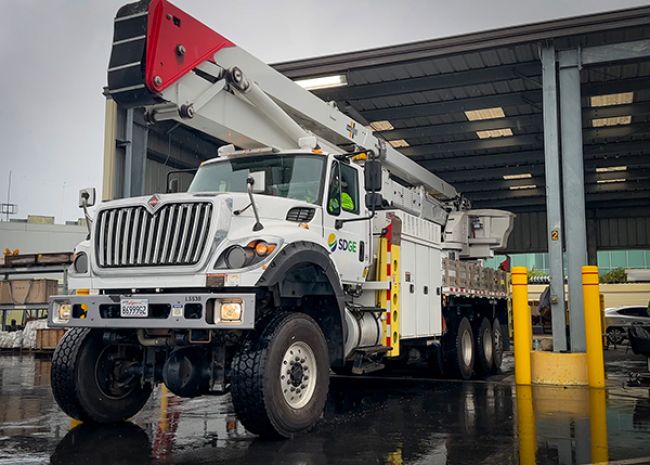
Women in Utility Fleet: Lissa Brady
Lissa Brady arrived at the University of Washington as an English major and graduated with an international studies degree.
She served in various sales roles for nearly 25 years with GE Capital (now Element Financial Corp.), PACCAR Financial and Terex Utilities, earning her MBA along the way.
Sales is definitely not the traditional road to fleet management. But it was the right path for Brady.
After an entire career on the seller’s side of the table, she has found a home on the buyer’s side, joining San Diego Gas & Electric as the fleet asset manager in 2020. And earlier this year, Brady became a director on the Electric Utility Fleet Managers Conference (EUFMC) board.
What exactly was Brady’s path to fleet management? What valuable insights has she gained throughout her career? And what advice does she have for women considering a career in fleet?
I recently sat down with Brady to delve deeper into her story. Here is an edited version of our conversation.
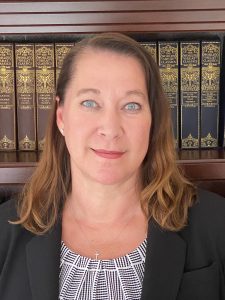
UFP: I find it fascinating that your degree is in international studies. What interests led you onto that path?
Lissa Brady: I went to college back in the late ’80s. That was when there was so much international investment in the United States. Many of our big companies were being bought by Asian corporations. It seemed smart to me to understand international business a little bit more.
I had started my academic career as an English major – I’ve always been a literature geek. But I realized an English degree basically qualified me to be a secretary at that time. It occurred to me that I would be better prepared for the business world if I learned about the international approach to business.
So, your degree took you to your first job out of college in international shipping?
Yes. My first job was working for Hyundai Shipping. And that set the tone for my career.
I then took on a sales position at CAI International, a shipping container leasing and sales company in San Francisco. I really wanted to travel and was super excited to have the opportunity to be in sales for that company, where I called on ocean carriers from Texas to the West Coast. It was an interesting job, and I loved it. And I loved living in San Francisco.
What led you to leave CAI and move to GE Capital in 1998?
I got engaged to a Seattle native and wanted to move back up there. I was looking around and found an opportunity with GE Capital. I worked for a trailer leasing company there and then moved to GE Fleet – into the equipment side of the business.
While at GE Capital, I pursued my Master of Business Administration because, of course, international studies is a liberal arts degree. I thought I needed a bit more sophistication on the business side of things to continue to grow.
What was the immediate impact of the MBA on your career?
With my MBA, I got a fantastic opportunity in 2004 to go to PACCAR, the parent company of Kenworth and Peterbilt trucks, and go into their leadership development program. I worked with their internal finance company that provides financing to PACCAR customers who buy their equipment. Ultimately, I worked for PACCAR Financial for four years. The leadership development program was a one-year rotation program where I got to do short stints all over the companies that make up PACCAR, including working in the Denton Peterbilt plant and helping with an operational audit at the PACCAR Financial office in Milan.
How did you make the shift back from finance to equipment?
In 2010, I left PACCAR for Terex, starting with their finance company and then moving to equipment services.
At the time, Tim Ford was the president of Genie [a Terex brand that manufactures work lifts and platforms]. He basically said to me, “If you can sell financial services, you can sell any service – including equipment service.” I gave it a shot and stayed on the equipment side of the business until I joined SDG&E in 2020.
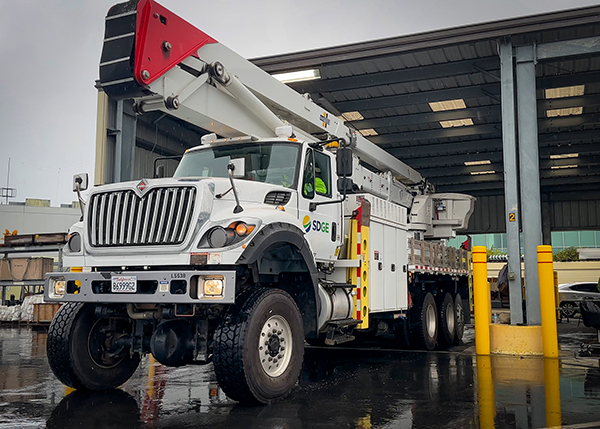
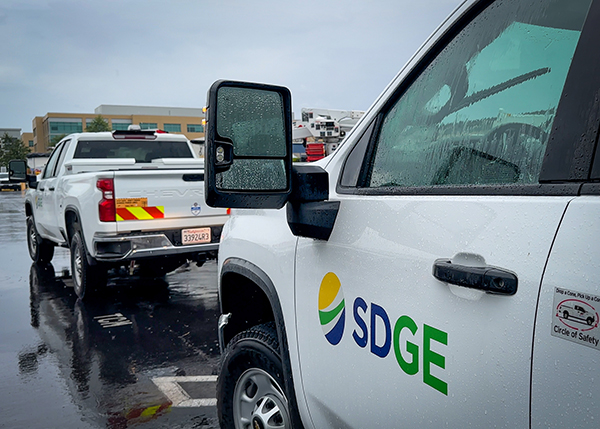
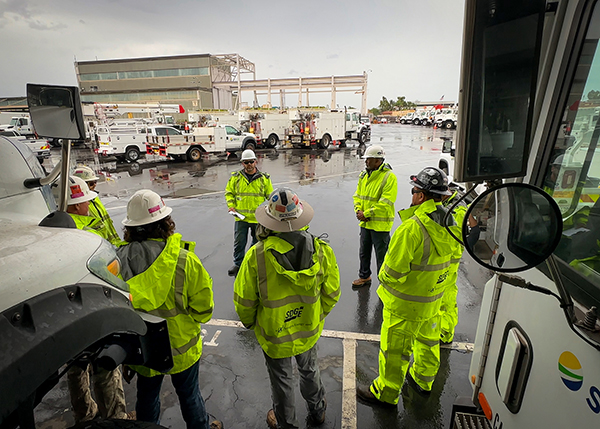
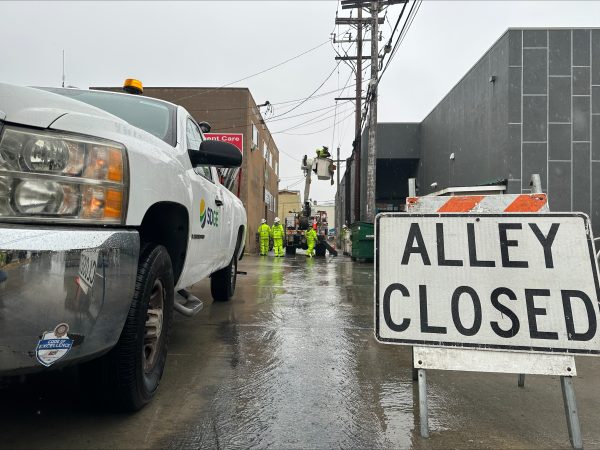
How did the opportunity at SDG&E arise?
The previous fleet asset manager was promoted into another area of SDG&E. And, of course, SDG&E was one of my customers when I was a regional manager for Terex Utilities. So I knew the team. They asked me, “Would you be interested in talking about this?”
Truthfully, as women on this side of the fleet industry, we get a lot of recruiting calls. And, generally, I would say, “Oh, I’m fine. I’m good where I am.”
But the combination of them being such a great team – I always loved working with them – and having the opportunity to come back to California, where I was born and raised, made it appealing. Our daughter was in college, and I told my husband, “You know, let’s do this. Let’s take this meeting. You got the first 30 years here in Seattle. Maybe I’ll get the next 30 years in California.”
It was great timing, and I’m thrilled to be working with SDG&E.
How would you describe your role as fleet asset manager?
SDG&E divides the fleet department into the maintenance team and the asset team. My team works with the user groups to spec the vehicles to go out to bid, works with our supply chain team to get the vehicles on order, works with the vendors throughout the build process, and inspects the vehicles before we release them for delivery. The maintenance team manages the vehicles over their useful life. And then, the vehicles come back to my team for removal from service and send them out to auction.
How has your sales background helped you on the “buyer side” as a fleet manager?
One thing that helped at SDG&E is that my predecessor was also in sales. He came from Altec. The leadership team here saw that a skill set in sales could be a benefit for someone in my role.
I believe many people think of sales as, “Oh, you go golf and buy lunches.” But that’s not really what sales is about.
Sales is about communicating. And that’s a skill that absolutely serves every businessperson in every capacity, including fleet. You have to connect with people and share your priorities in a way that engages your listener – the person with the power to help you achieve those goals. You have to engage them in your viewpoints and persuade them that your priorities are serving the company as a whole, to help the company make better business decisions.
Everybody is here at SDG&E to serve our community. And that means we must all get out of our silos and come together. And communication – in other words, sales – is such a huge part of that.
What challenges have you encountered in your fleet career?
Fleet hasn’t historically been an easy place for a woman to make a career. And it definitely wasn’t in the ’90s when I started.
Although we have so many fantastic women CEOs and CFOs in the utility industry, there are just not as many women on the ground in fleet as there should be. And I would love to see that change. Certainly, I hope to help be a part of that change. And it’s something that we talk about at SDG&E, and we talk about it at the EUFMC board meetings. How do we help support the industry, our specific side of the industry, in making that change so that women are not just comfortable when they get here but attracted to come here and build a career in fleet the way that I have?
The world certainly has changed. And transportation is the next big hurdle that we have to jump to create the kind of world that we want to leave for the next generation.
What advice do you have for other women considering a career in fleet?
It’s the same advice I would give anyone starting out: Really think about what you want. And understand that you have to navigate a path to that goal. How will I educate myself? What experiences will I pursue? What will I cultivate about myself that will allow me to get where I want?
There can be a tendency among a lot of young people to allow themselves to be pushed or pulled rather than navigating to where they want to go. But if you want to get to a goal or particular place in life, you have to think about the steps you need to take to get there and not wait for somebody to come and put it into your lap.

